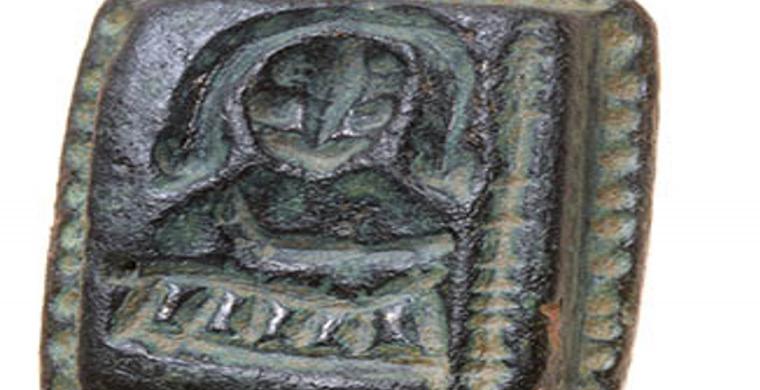St. Nicholas Ring Unearthed in Jezreel Valley Garden
By Amanda Laughead
https://www.biblicalarchaeology.org/
March 21, 2018
IAA archaeologist Yana Tchekhanovetz believes this 700-year-old ring, which depicts a bald man and a bishop's crook, bears the image of St. Nicholas. Photo: Clara Amit, Israel Antiquities Authority.
While working in a garden in the Jezreel Valley community of Moshav Yogev in Israel, landscaper Dekel Ben-Shitrit uncovered an exceptional piece of jewelry in the dirt: an ancient ring engraved with the image of a figure. After posting a picture of the ring on Facebook, he was advised by his neighbor, Dr. Dror Ben-Yosef, the director of the Israel Nature and Parks Authority's Lower Galilee Education Center, to bring the find to the Israel Antiquities Authority (IAA).
Dr. Yana Tchekhanovetz, an IAA archaeologist who is an expert on the Byzantine period, examined the ring.
"This special ring is amazingly well preserved and will contribute a great deal to science," Tchekhanovetz explained in an IAA press release. "On the ring is the image of a bald man with a staff next to him. On preliminary examination, this seems to be St. Nicholas holding a bishop's crook--his hallmark."
So what was the St. Nicholas ring doing in the Jezreel Valley? Tchekhanovetz believes the ring, which dates to the 12th--15th centuries C.E., might have belonged to a Christian pilgrim traveling through the Holy Land. In popular imagination, St. Nicholas often conjures an image of a jolly old man with a white beard who climbs down chimneys on Christmas Eve--Santa Claus. In the Eastern Christian world, St. Nicholas is celebrated as the patron saint of travelers. Because of this association, the image of St. Nicholas was often carried by sailors and pilgrims. St. Nicholas was also known for his generosity and bravery.
The free eBook Life in the Ancient World guides you through craft centers in ancient Jerusalem, family structure across Israel and ancient practices--from dining to makeup--throughout the Mediterranean world.
IAA archaeologist Yotam Tepper, who specializes in Roman roads, is not surprised that the pilgrim to whom the St. Nicholas ring belonged was passing through Moshav Yogev.
"We know that the main Roman road from Legio to Mount Tabor passed next to Moshav Yogev, and the road must also have been used throughout the centuries by Christian pilgrims on their way to the sites on Mount Tabor, Nazareth and around the Sea of Galilee," said Tepper.
The IAA praised Ben-Shitrit for turning in the rare St. Nicholas ring. Nir Distelfeld, an anti-theft inspector, commented: "We thank Ben-Shitrit for handing over this special artifact to the Israel Antiquities Authority, and we encourage others to do the same. When they do, they enrich and deepen archaeological understanding of the past that belongs to all of us."
Amanda Laughead is an intern at the Biblical Archaeology Society.














